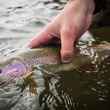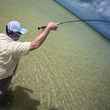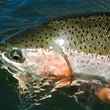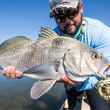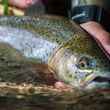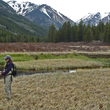Over the past week, individuals and organizations across the US have been asking bonefish and tarpon advocates to make their voices heard to the Florida Fish and Wildlife Conservation (FWC) Commission which was scheduled to meet yesterday to consider new regulations that would place tarpon and bonefish under strict catch and release only protections. The efforts of those who took the time to contact the commission to advocate for those protections have paid dividends, as FWC officials approved yesterday new rules preventing the harvesting of tarpon and bonefish.
The new regulations also introduce new protections regarding the handling of both tarpon and bonefish. The rules now require that tarpon over 40" not be removed from the water at any time. Weighing, measurement, scientific sampling and photography of these large tarpon must be completed with the fish still in the water. Tarpon under 40" may be temporarily possessed out of the water for these activities, but must subsequently be returned to the water unharmed. Bonefish will see increased protection from the removal of a tournament exception that previously allowed bonefish to be possessed by tournament anglers for transport to a tournament scale.




